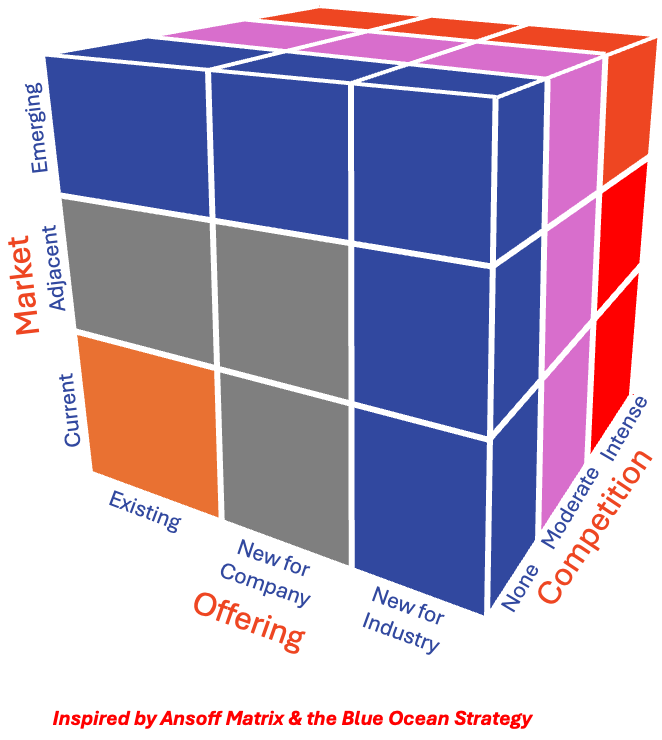Team-Led Triumphs: Pioneering Service Transformation Strategies
One of the key challenges confronting manufacturers today, as they embark on their service transformation journey, is building strong service...
4 min read
Jan van Veen
Mar 10, 2025 1:36:49 PM

Outcome-based services" have become a buzzword in the service industry, often associated with new pricing models, performance guarantees, or pay-per-use agreements. But what do we actually mean by outcome-based services?
In practice, we see many interpretations that focus on metrics of usage or performance rather than actual business results. A service provider might charge based on uptime, machine hours, or scans per month, but does that truly mean they are delivering an outcome? Not necessarily. These models adjust how customers pay, but they don’t always shift the responsibility for achieving a meaningful business outcome.
This confusion creates two major challenges:
In this article, we’ll break down key misconceptions about outcome-based services—what they are, what they are not, and how businesses can truly align their services with customer success.
Every product and service delivers value—customers purchase them because they contribute to their business. However, providing value alone does not make something an outcome-based service. The distinction lies in how services are structured and the level of responsibility assumed by the provider.
Outcome-based services explicitly target customer business results such as cost reduction, increased revenue, and efficiency gains. In some cases, service providers also take on responsibility for achieving these results, reducing the customer’s risk in the process. The key difference is in shifting the focus from delivering a service to ensuring a specific outcome that aligns with the customer’s strategic goals.
Customers have their own operating models to create value using their assets, processes, and strategies. When a provider ensures outcomes, they go beyond offering tools or performance metrics—they commit to making a tangible business impact.
Many businesses misunderstand outcome-based services, confusing them with performance-based contracts, product-as-a-service models, or traditional service agreements. Let’s clarify some common misconceptions.
Guaranteeing a performance level, such as 98% uptime, is not the same as delivering an outcome. The actual outcome for the customer could be increased production efficiency or revenue growth—the uptime itself is only a contributing factor.
Traditional services like maintenance and spare parts help customers achieve business objectives, but they typically stop short of guaranteeing specific results. The difference in an outcome-based approach is the explicit commitment to achieving a defined business objective.
Customers do not buy products just for their features—they incorporate them into workflows, business models, and processes to achieve specific outcomes. The shift in service thinking is about moving from enabling an outcome to ensuring it happens.
Subscription and leasing models provide flexible ownership options, but they do not inherently ensure business results. A product-as-a-service approach can be part of an outcome-based service, but on its own, it does not meet the criteria.
Payment models often get confused with service models. Just because a service uses performance-based pricing does not mean it is outcome-based.
Usage-based payments (e.g., per scan, per operating hour) align costs with usage but do not necessarily guarantee business impact. True outcome-based models focus on delivering measurable business improvements.
Subscriptions provide cost predictability but do not mean the provider is responsible for delivering specific business outcomes.
The revenue model and service model are connected but not the same. The service model defines what value is delivered and how, while the revenue model determines how payment is structured. A well-designed outcome-based service aligns pricing with value creation.
To build true outcome-based services, companies must focus on solving the real challenges customers face. This involves:
Outcome-based services can be structured in different ways, depending on the level of provider responsibility:
The further a company moves towards DIFM, the more they integrate into the customer’s operations and assume responsibility for results.
Pricing should reflect the value delivered. Potential models include:
Outcome-based services are not just about new pricing models or performance guarantees—they require a fundamental change in approach. Companies that succeed in this space:
This shift goes beyond attaching financial incentives to performance. It involves structuring services in a way that genuinely helps customers overcome obstacles and achieve their goals.
Read more articles about service strategy on our blog. Read here
Join us at the Service Transformation Summit to explore how next-generation service models can unlock new growth opportunities.
✅ Are your services solving technical problems or delivering real business outcomes?
✅ What new capabilities do you need to develop to make this shift?
👉 Register now and take your service strategy to the next level!
Subscribe for the our Impulse Letter
With regular updates about service news, trends and best practices.

One of the key challenges confronting manufacturers today, as they embark on their service transformation journey, is building strong service...

In today's complex landscape, the pace of service transformation is crucial, especially for product-centric manufacturing companies. Crafting a...

To achieve sustained growth, service leaders must go beyond common trends and develop strategies rooted in structured growth patterns, unique...